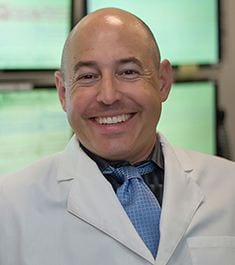“The Consortium represents the natural evolution of advanced care for epilepsy and a model for the regional management of complex neurological disorders: a closely affiliated collection of highly trained specialists, working efficiently and effectively across a diverse geographical, economic and cultural landscape to provide the highest level of care. But it did not begin that way. The USC Epilepsy Consortium began as a vision and promise.
The vision crystallized in 2007, when Drs. Christi Heck and Helena Chui realized that a dedicated monitoring unit would be critical to provide high level care to underserved patients with epilepsy in Los Angeles. Unfortunately, resources were extremely limited at LAC+USC, the tertiary care public hospital inundated with patients suffering from trauma and other acute medical and surgical conditions. So they turned their eyes to Rancho Los Amigos, a nationally recognized rehabilitation center owned by the Department of Health Services. “Rancho” had just the right combination of features to support a small neurology unit and they began to plan…
The promise came from Dr. Charles Liu that April in the old neurosurgical library of LAC+USC. Dr. Liu was Assistant Professor of Neurosurgery at USC with a keen interest in epilepsy surgery and I was in my final months of fellowship training, interviewing for perhaps the only potential epilepsy job in Southern California. He said to me, “If you build a monitoring unit at Rancho, I will come and operate.” It was all I needed to hear. The epilepsy monitoring unit at Rancho launched in September 2007 with one video-EEG machine borrowed from LAC+USC. Within a few months we had our first dedicated EMU beds and new video-EEG equipment. The rest is a bit of local history.
Those first few years of the USC Comprehensive Epilepsy Program taught us that there are many benefits to a hybrid model of epilepsy care: patients with commercial insurance were cared for in the private practice, and uninsured patients were cared for in the public hospital and clinic. Importantly, all patients were discussed by the same team of specialists, and the optimal diagnostic studies and treatments were pursued independent of insurance status, language, ethnicity or location. If patients either gained or lost insurance during their treatment or follow up, they could still be followed by the same team of epilepsy specialists. Clinical resources such as PET and SPECT, and research collaboration could be nurtured in the “private” or “public” sector to complement one another. A decade later, these principles are more important than ever, and the USC Epilepsy Consortium has evolved to meet the needs of patients and families across Central and Southern California.
In 2014, I accepted the position of Director of the Epilepsy Program at Hoag Hospital, effectively expanding the reach of the Consortium by creating a network of care for patients with epilepsy within the St. Joseph – Hoag Health System in Orange County. From Kern County where almost a million people lived without any epilepsy center or specialist, to Orange County where over 3 million people lived with a single university center, there is now a network of dedicated epilepsy specialists – neurologists, neurosurgeons, nurses, psychologists and others – who deliver the highest level of care to our patients. I am proud and privileged to have served and continue to serve patients with epilepsy within the Consortium”

